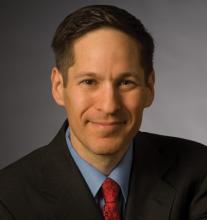U.S. waistlines grew once again in 2009, with results from a national, annual telephone survey of more than 400,000 Americans showing that national obesity prevalence in adults reached a new high of 26.7%, up more than 1% from 2007, and by nearly 7% from 2000.
Nine states, all clustered in the South and southern Midwest, had statewide obesity prevalence rates of at least 30% in 2009, up from no states in 2000, and up from three states in 2005 and 2007.
The new data show “obesity continues to be a major public health problem. We need intensive, comprehensive and ongoing efforts to address obesity,” said Dr. Thomas R. Frieden, director of the Centers for Disease Control and Prevention in Atlanta. The CDC runs the annual Behavioral Risk Factor Surveillance System (BRFSS) survey that generated these data, and CDC researchers reported the findings (MMWR 2010;59 [Aug. 3]:1-5
“Over the past decades, obesity has risen faster than anyone could have imagined,” Dr. Frieden said at a press conference on Aug. 3 where he presented and discussed the new data.
The continued growth of obesity has substantial health and economic consequences. The CDC report noted that each obese person (body mass index of at least 30 kg/m2) accrued on average $1,429 increased cost annually for medical care, compared with those at normal weight. With the report estimating roughly 75 million obese American adults in 2009 – up by 2.4 million from 2007 – the total medical-cost price tag for adult, American obesity ran to beyond $150 billion per year.
The new report highlighted the need to intensify efforts already underway to reduce and prevent obesity in America. “Obesity is a complex problem that requires both personal and community action. We need to change our communities into places where healthy eating and active living are the easiest path,” said Dr. William Dietz, director of the CDC’s Division of Nutrition, Physical Activity, and Obesity.
As with tobacco, “we believe that changes in policy, environment, and systems are necessary to control and prevent the epidemic. There has been a broad cultural shift that has made high-calorie food more readily available and has reduced the opportunities for physical activity,” Dr. Dietz said at the press conference. He was optimistic that “there has never before been a greater convergence of energy and interest in the problem of obesity” as there now is in the United States.
“Obesity is a societal problem that will take a societal response,” Dr. Frieden said.
Dr. Dietz also noted that these findings derived from self-reports to the BRFSS are underestimates of true obesity prevalence because of the unreliability of self-reported height and weight data in telephone surveys.
The 2009 obesity rates varied substantially by several demographic factors. The highest prevalence rates occurred in Americans aged 50-59 and 60-69, with a 31% obesity rate in both age groups. Obesity prevalence only reached 20% in those aged 18-29, and 21% in those 70 or older.
Race or ethnicity also had a substantial impact, with African Americans having a 37% obesity prevalence, followed by a 31% rate in Hispanics and a 25% rate in white. Among African American women the obesity rate soared to 42%, compared with a 31% rate in African American men. Overall, however, gender had a modest effect, with a 27% obesity rate in all American men and a 26% rate in all women.
Education also tracked with obesity, with college graduates having an overall 21% rate, compared with a 29% rate among those with even some college-level education, and a 33% obesity rate in people who did not finish high school.
Geography also linked with major variations in obesity rates. The rate reached 28% in the South and Midwest, and 24% in the East and West. A state-by-state breakdown showed even wider variation. Nine states, all clustered in the south-central United States, had statewide obesity rates at or above 30%: Alabama, Arkansas, Kentucky, Louisiana, Mississippi, Missouri, Oklahoma, Tennessee, and West Virginia all fell into this group, with Mississippi topping the list with a statewide prevalence of 34.4%. At the other end of the spectrum, Colorado had the lowest prevalence rate, 18.6%. The only other part of the United States with a rate less than 20% was Washington, D.C. at 19.7%
The reasons that Colorado residents have had relative success warding off obesity remains unclear, Dr. Dietz said. The high altitude where many residents live may be a factor, as people expend more energy to breathe at higher altitudes. Also, the state has supported physical activity for many years by, for example, building biking and walking paths, and Colorado residents responded by developing a culture of activity, he said. Explanations of why Washington, D.C., residents also had a relatively low obesity rate are also unclear; one factor may be high reliance on public transit in the city.
Thomas R. Frieden

